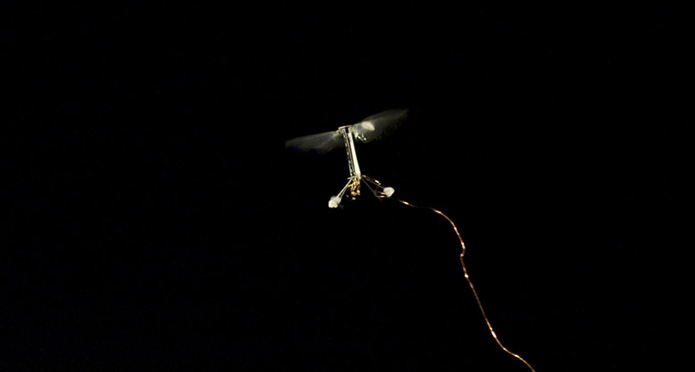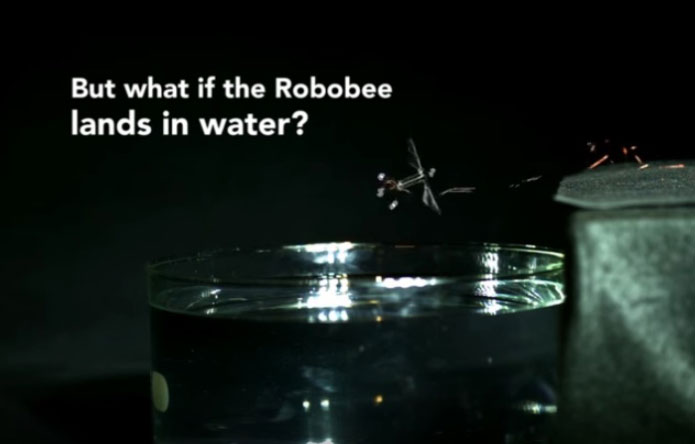RoboBee is the first insect-sized robot smaller than a paperclip that can both fly and swim
Researchers at Harvard John A Paulson School of Engineering and Applied Science (SEAS) have just developed a insect-sized robot smaller than a paperclip that can both fly and swim, Known as “RoboBee”.
This led to the first-ever demonstration of a robot capable of aerial and aquatic movement. the air and water are two totally opposite environments for a robot to move.
For a robot to fly in air, it should have large wings to produce lift while swimming in water requires smaller wings with less surface area to reduce drag.

Taking inspiration from the puffin, the engineers used theoretical, computational and experimental studies, to find that the only major difference between a puffin’s flying and swimming is the speed at which the wings move. researchers applied this discovery to modify the flapping motion of the wings, giving it the ability to swim.
But the RoboBee was very small it would not break the surface tension of water, hence wouldn’t have move in the forwards direction. to overcome the problem of surface tension, researchers set the wings of RoboBee at a specific angle and after it hovers the wing, it folds them and crashes unceremoniously into the water in order to sink.

Water is nearly 1000 times denser than air, wings of RoboBee would snap if hover 120 times per second. the team lowered the wing speed from 120 flaps per second to 9 but kept the flapping mechanisms and hinge design the same.
Researchers have coated the electrical connections with the waterproof glue, to protect the circuitry from short-circuiting below the water.

Smaller than a paper-clip, the RoboBee weighs 80-mg, is made up of laser-cut carbon fiber that is joined together by plastic to shape like a frame.
The robot uses piezoelectric actuators tech to flap gossamer-looking plastic wings at the rate of 120 beats per second. the robot is powered by an external source through wire tether, and also for optimizing weight.
The concept of a robot that can fly as well as swim is not new. It was first proposed by a Russian engineer long ago in 1939.
















































